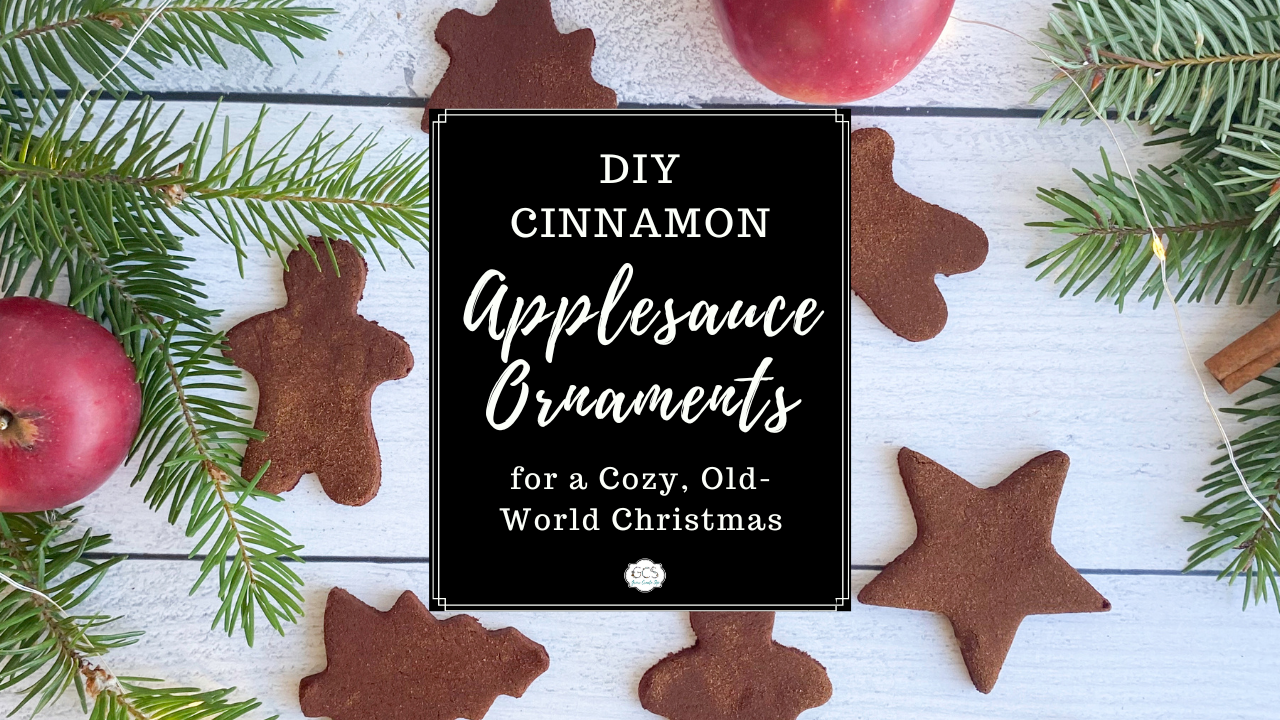Is My Kombucha Moldy? Mold/Not Mold
Aug 23, 2022
You're going about your day and decide to check on your homemade kombucha. You take a peek into the jar and...What is that?! You notice something doesn't look quite right.
Your SCOBY (symbiotic colony of bacteria and yeast) looks a little off. Bumpy, uneven, brownish, strings hanging down, fuzz, white spots, dark spots, is this all normal? Has my kombucha gone bad?
What you may be noticing is mold which started sometime during the fermentation process. Don't worry; you're not alone. A lot of people have experienced mold on top of kombucha.
Brewing kombucha at home is a fun and easy way to enjoy this delicious probiotic beverage. But sometimes, things can go wrong, and mold can start to form on your SCOBY. But don't fret; we've got you covered!
What Is a SCOBY?
SCOBY stands for a Symbionic colony of bacteria and yeast. Many think that the SCOBY is the white/Pale cellulose mat that grows on the top of the Kombucha tea. In fact many online articles refer to the cellulose mat as a SCOBY. When in fact, the Symbiotic Culture of Bacteria and Yeast actually resides in the tea itself and is not physically seen. Thus the white mat that grows on the top of the tea is often referred to as the SCOBY because it is the only item that can be seen which is different from the fermented tea.
This white cellulose mat is not REQUIRED to brew kombucha but is rather the house or home that the symbiotic cultures build when they are healthy. With that said, though, the fermented tea can go bad, or get weak (we will cover the possible reasons below) and the unhealthy tea will cause the cellulose mat known as the SCOBY to mold. Every time new kombucha is made, a new home or new "SCOBY" is created, and even if the old SCOBY is disturbed, a new one will form again, adding another layer to the "house." A moldy SCOBY is a sign that you have something off in the balance of your fermented tea.
What Is Kombucha Mold?
Kombucha mold is a type of fungus that can form on the surface of your kombucha during the fermentation process. A few different kinds of mold can grow on kombucha, but the most common type is called Aspergillus.
Kombucha mold is considered harmful to humans, just like mold on any other food item. It will also cause your kombucha to taste bad. Mold can make your SCOBY sick, affecting future batches of kombucha. If you notice mold growing on your kombucha, it's best to throw it out and start a new batch.
What a Normal SCOBY Looks Like
A normal SCOBY in kombucha should be opaque many with a smooth surface. SCOBYs can also look pretty weird with all their lumps and bumps or ridges.
You may also notice "strings" hanging down underneath your SCOBY. The brown strings are the "Y" in scoby, the yeast. This is normal, and mold doesn't typically form beneath the SCOBY. Though many new kombucha brewers are not familiar with what a normal healthy SCOBY looks like. Below are some interesting-looking HEALTHY scobys! Photos submitted by fellow kombucha brewers.
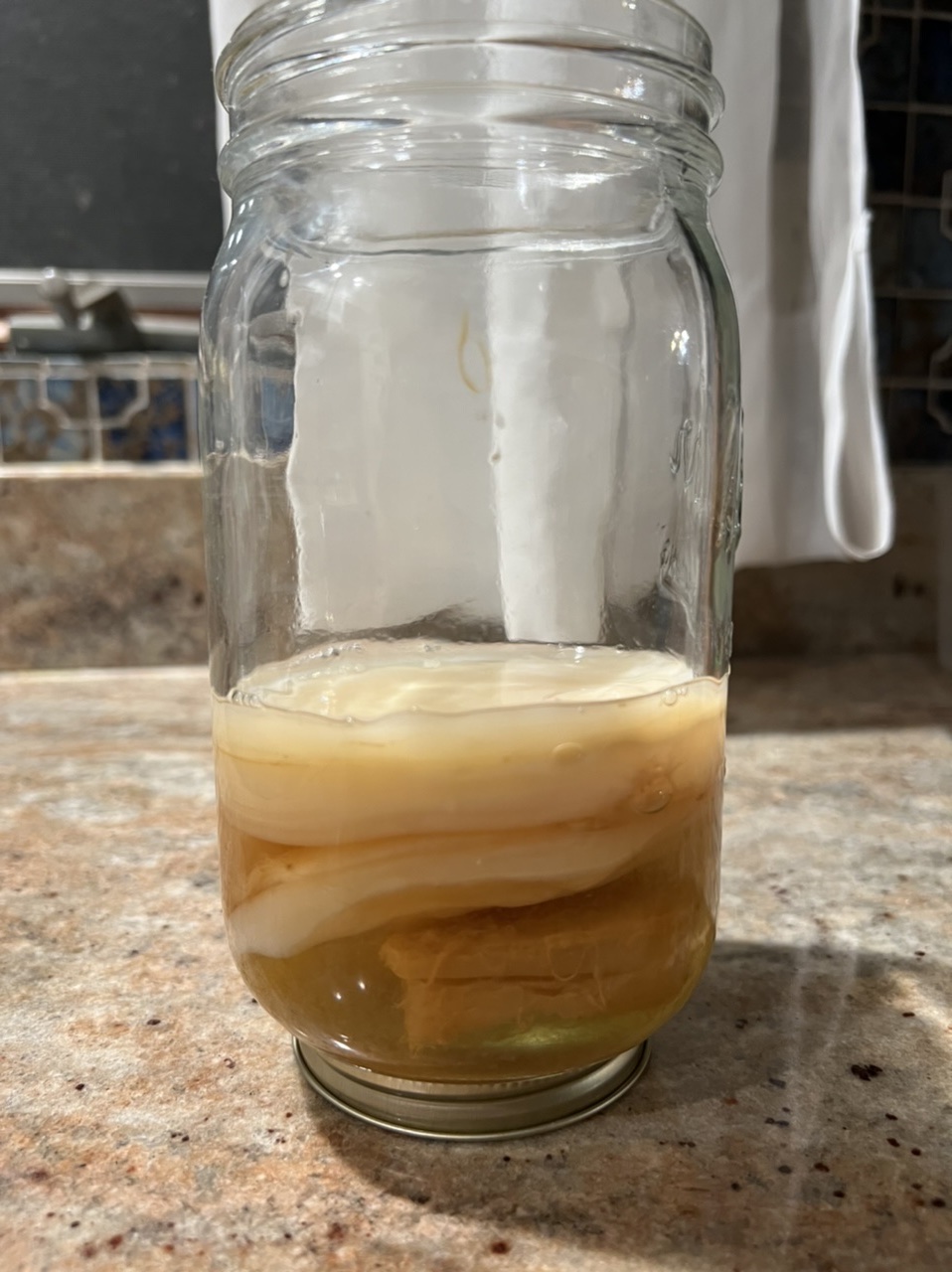
Photo by Catherine Milner
This SCOBY hotel is filled with a bunch of beautiful-looking, healthy SCOBY's! They start merging as many forms in one container, but you can see the original one at the very bottom. A bit darker in color, covered with strands of yeast, and more square than round. Both the round and square are healthy SCOBYs!
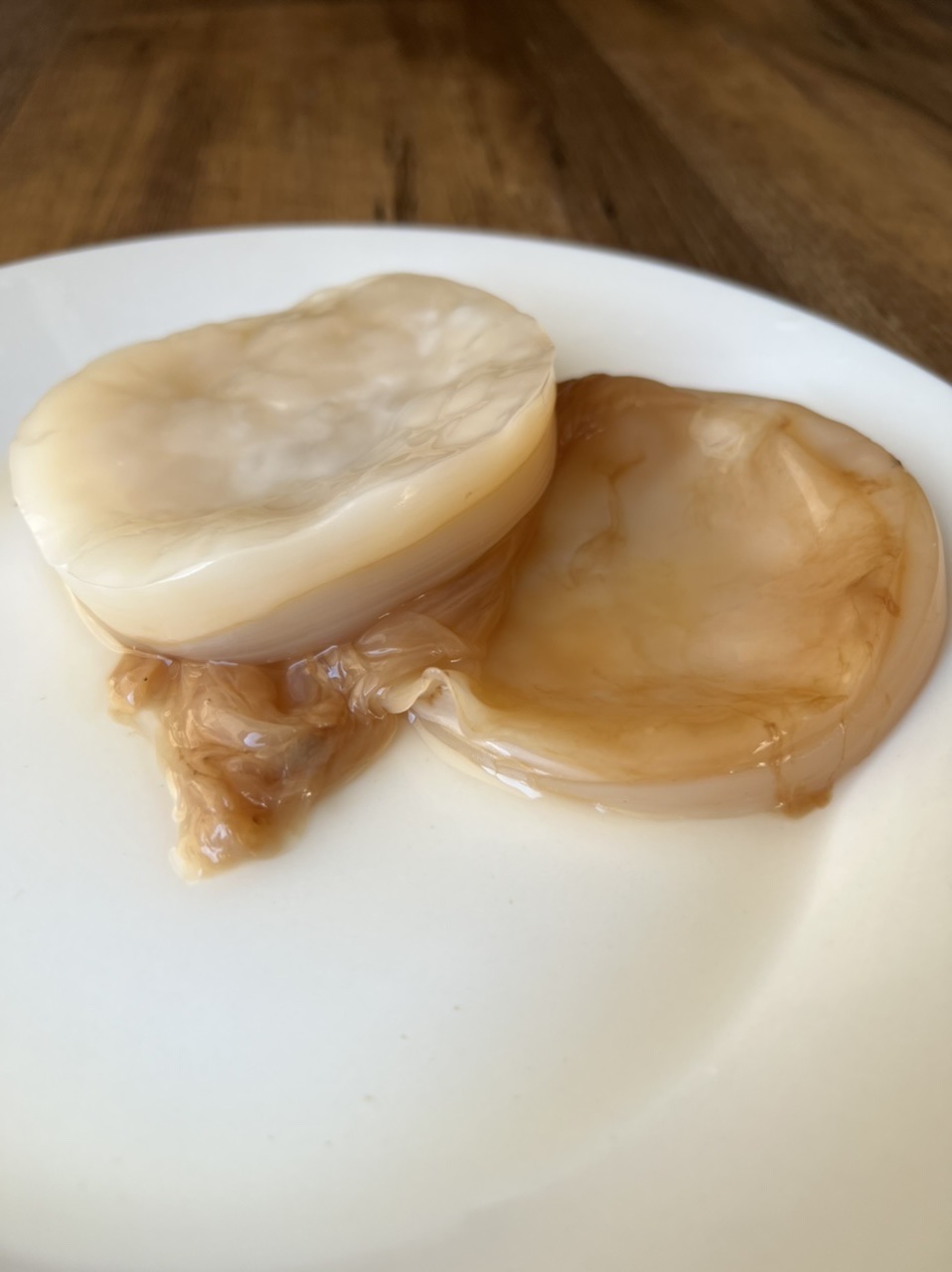
These very healthy looking scoby's are very thick and have been well fed. The brown strands are yeast formations that attached to the pillicle.

This wonderfully thick SCOBY in its home is a fabulous example of what many consider a normal-looking SCOBY; it's nice and consistently white and solid with no odd-looking features. Photo provided by Conner Jenson.
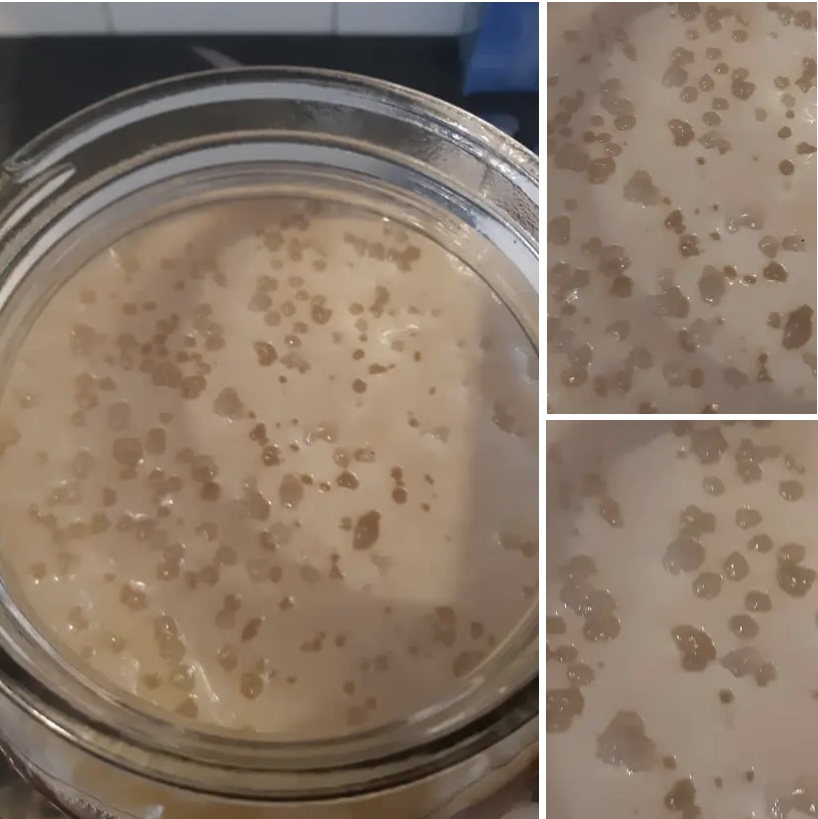
This scoby (pennicle) might seem a little strange looking with all of its wholes and spots, but this is a normal-looking healthy SCOBY. Or at least one way a SCOBY can look, as they are all very different just like people!
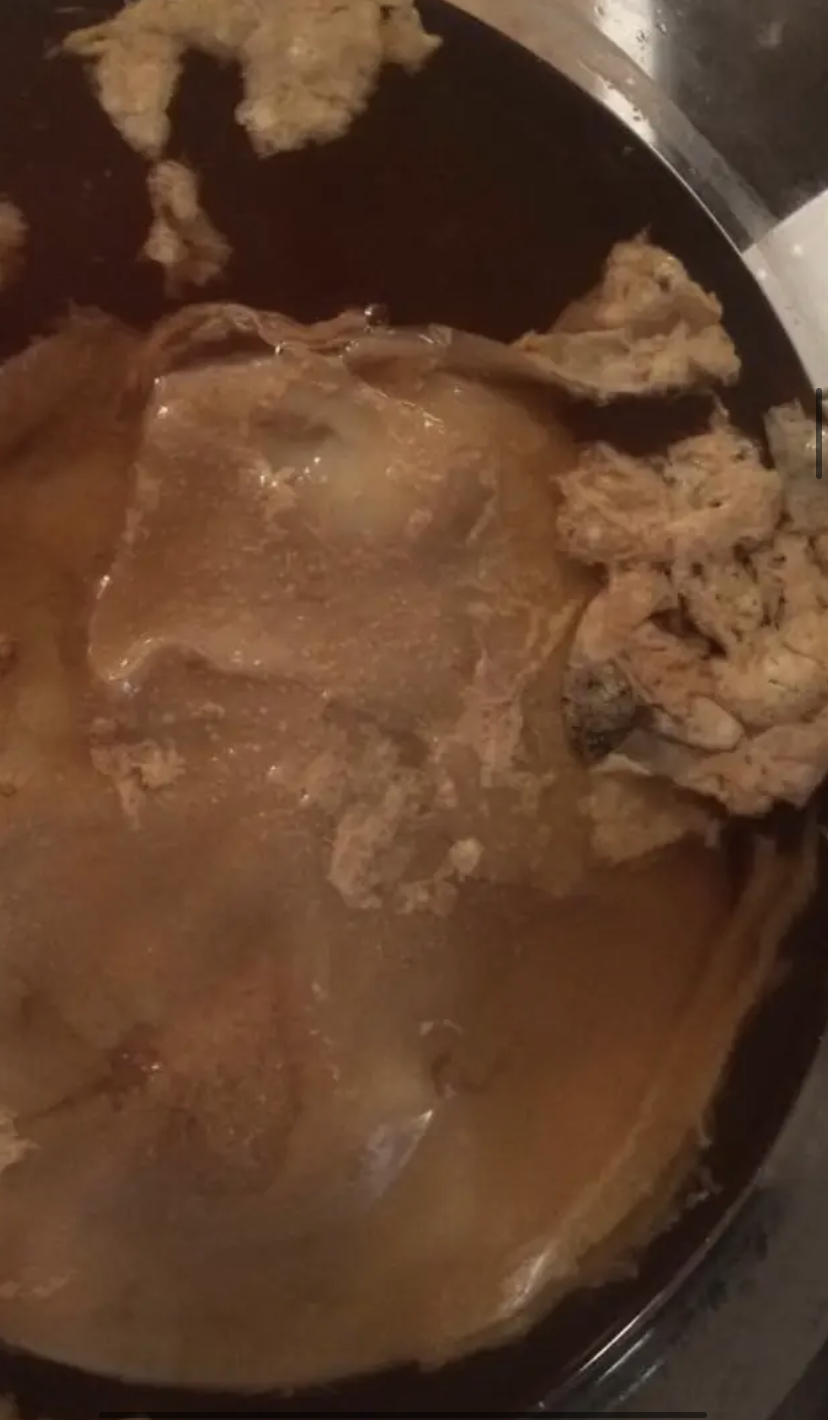
Three healthy round SCOBYs out of their SCOBY hotel resting on a clean plate ready to be used!

There is some bubble action in the corner of this multi-colored scoby along with pretty yeast formations around the outer edge on the right with pieces of new scoby (whiter parts) forming on the top).

This close-up shows some clumps on the SCOBY disc that look a little odd to the untrained eye. It also has some darker spots in it that one might think is mold. This clump is just a clump of Kombucha yeast on top of the disc and the dark spot is just a concentrated clump of yeast. This is a healthy scoby!
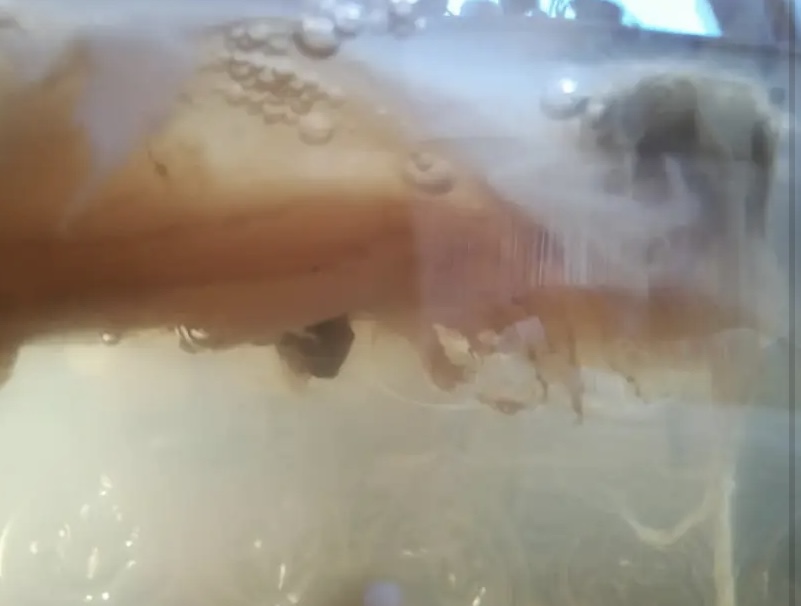
This sea creature like SCOBY has a smaller original SCOBY in the middle where the solid parts are with a new clearer one forming around it. The white and dark strands are clumps of the yeast attaching to the pellicle. Despite it's strange look it is a healthy active brew with no need to worry about mold!
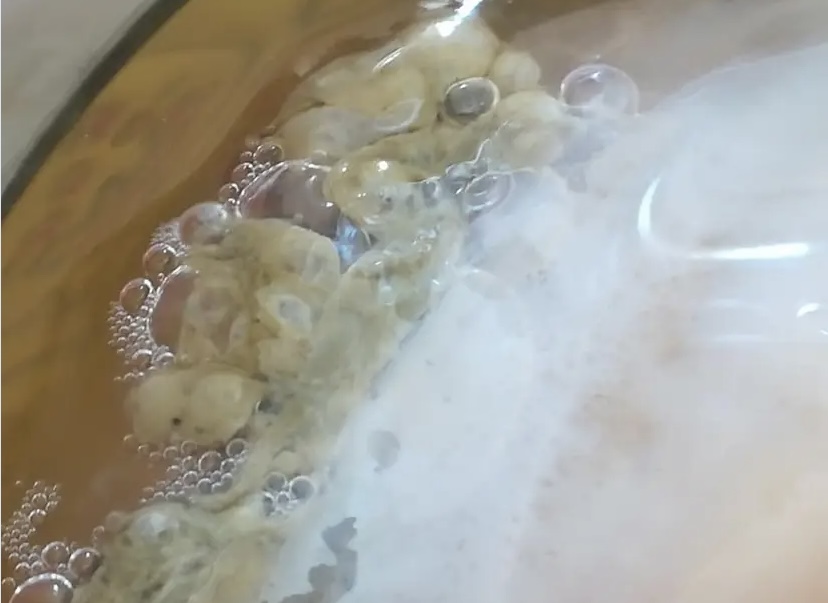
This is the top view of our 'sea creature' photo from above. The bright white is a new SCOBY forming and the yellowish climbs to the side is the upper view of the yeast. This SCOBY's pellicle is healthy and no mold is present!
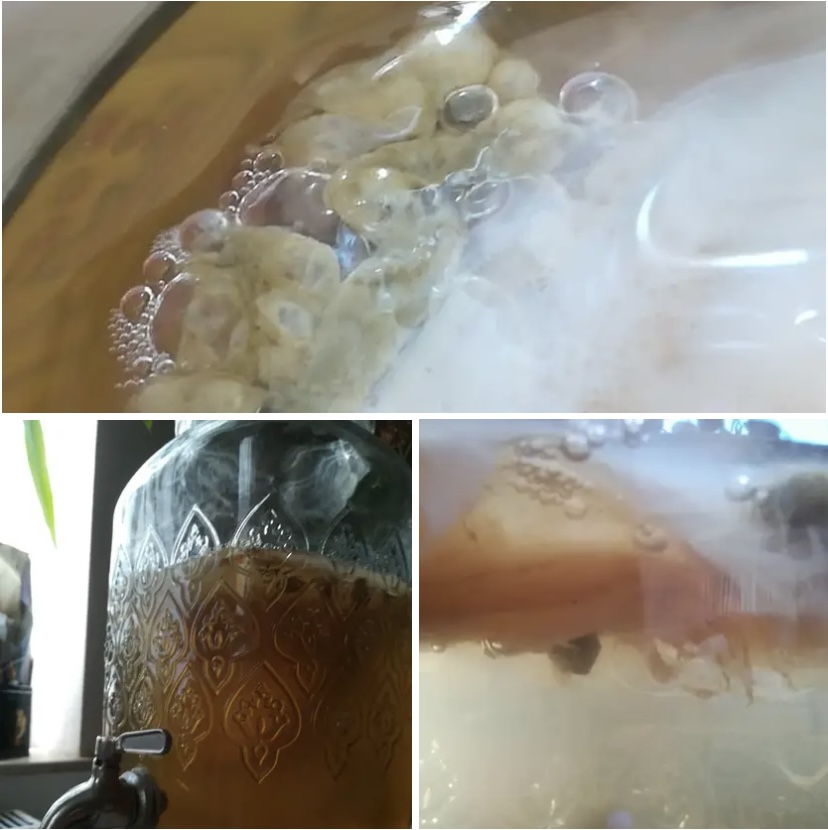
Here is a birds eye view and the close ups of the same 'sea creature' SCOBY pellicle to compare. A healthy brew!

Some of you will notice this thin film over the top that is translucent. That film is completely normal and the first phase of the SCOBY's pillicle when it is starting to form. Eventually it will grow more opaque and thicker to look like the white one that is in the middle of this photo. The brownish green clumps in the photo are actually just clumps of yeast and are perfectly fine. There is no mold here!
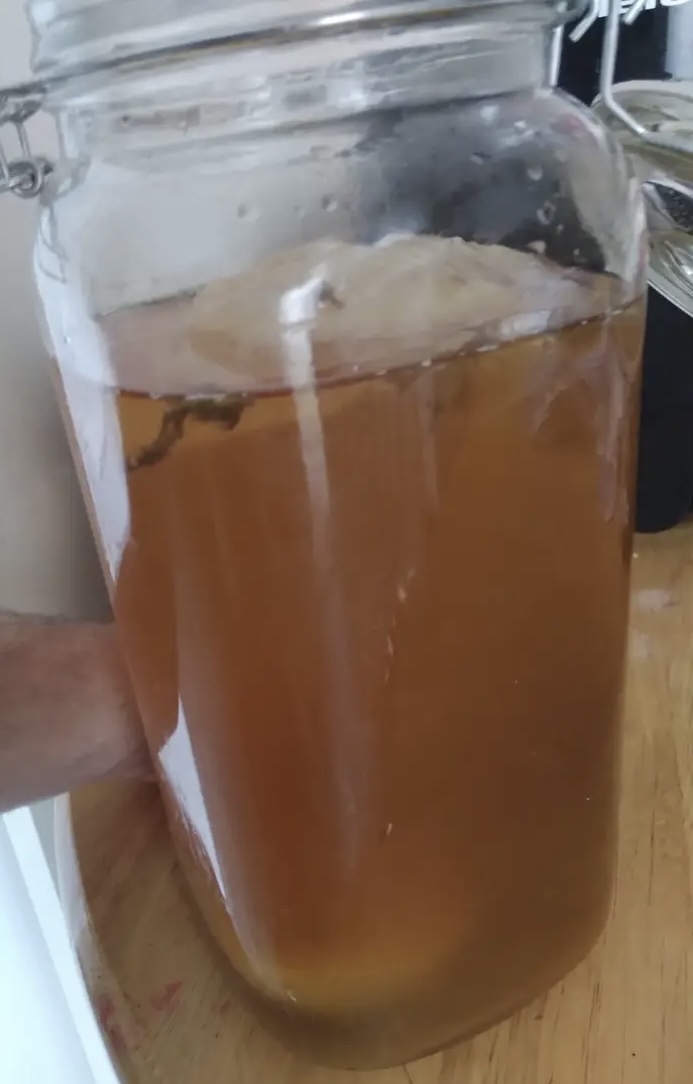
Here is the same SCOBY pellicle in it's jar from the side. At the bottom you can see another series of pellicle's that have sunk to the bottom. That's totally normal. Over time they can detach and sink as the newer ones that form are no longer holding it to the top of the jar.
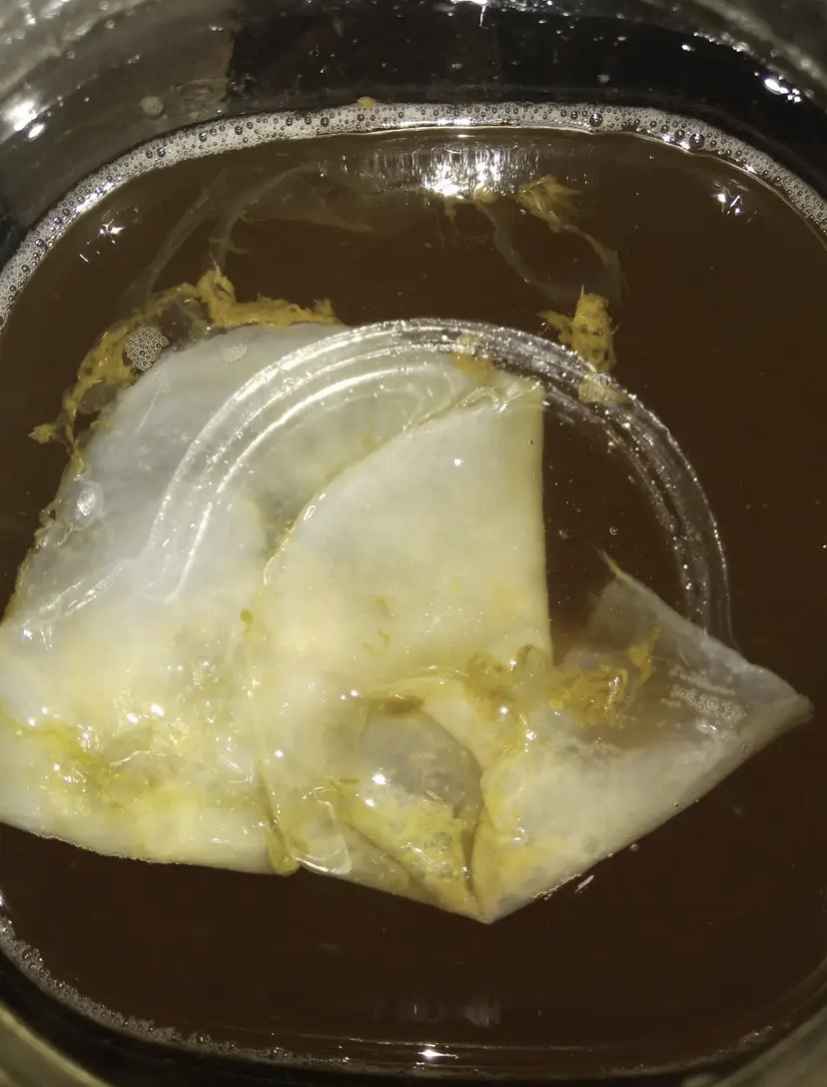
Here is a closer up of the same SCOBY pellicle where you can see better the yellowish brown which is the yeast formations inside of the very thin pellicle that was forming when the brewer moved it around into the shape you see it in now. It is best not to disturb the pellicle while it is forming.
Kombucha Mold Identification
The best way to identify mold on a SCOBY is to closely examine the SCOBY itself. Mold will usually appear as fuzzy, green, or black growth on the surface of the SCOBY.
Kombucha mold colors can vary, so it's important to look for other signs of mold as well. If you see any discoloration or spores, or notice an odd smell (not normal kombucha vinegar-like smell), these are all signs that your kombucha has gone bad and is no longer safe to drink.
If you see any mold on your SCOBY, you should remove it immediately and throw it out. Don't attempt to wash the mold off of and reuse the SCOBY. Mold spores are invisible to the human eye, so even if you wash off the visible part of the mold, the mold is still there.
Here is a photo of what mold on a scoby usually looks like. If you have the dry, white or green fuzz, toss it!
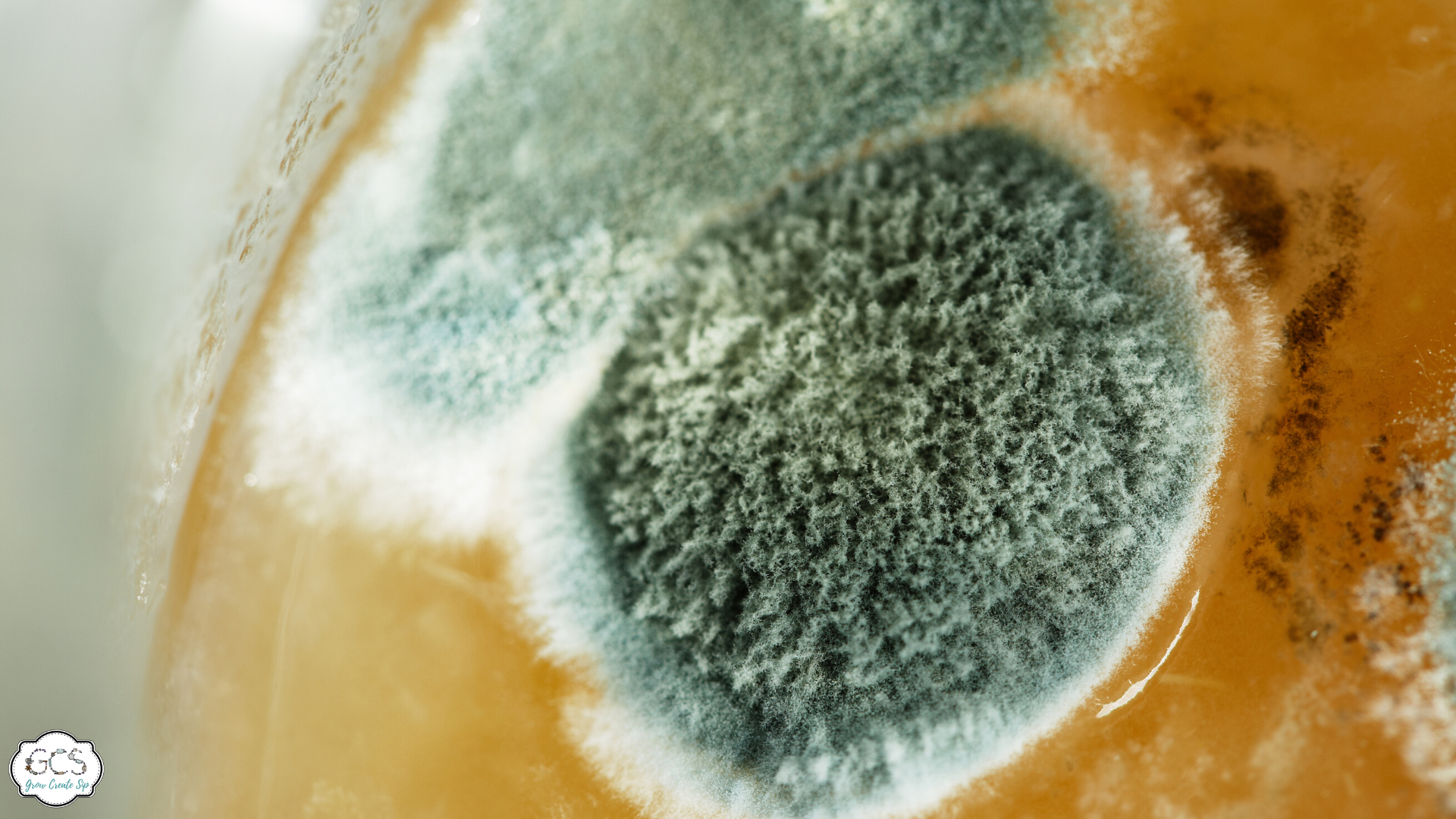
Why Does Kombucha Mold Occur?
Mold can occur for various reasons, including incorrect brewing temperatures, dirty brewing equipment, or not enough sugar in your kombucha recipe.
You Didn't Use Enough Starter
Your starter recipe should contain at least one cup of mature starter liquid per gallon of water. This is essential to acidify your kombucha brew, creating a hostile environment for mold to thrive. The more starter you use the faster it will eat the sugars and faster it will ferment.
Your SCOBY Is Too Cold
Don't place your SCOBY in the refrigerator or the freezer. It needs to be kept at around 70-85 degrees Fahrenheit to ferment properly. If it's too cold, the fermentation process will slow down, and mold can start to form.
You Didn't Use Enough Sugar
Sugar is essential for the fermentation process, as it provides food for the SCOBY to consume. Without enough sugar, your kombucha won't ferment properly, and mold can start to form.
The specific amount of sugar you should use in your kombucha will vary depending on the type of sugar you're using and the flavoring you use. We recommend using a one-to-one ratio of sugar to starter tea or one cup per gallon of water (new sweet tea). Organic cane sugar is the ideal food for your SCOBY but others have used honey and maple syrup as well, a skill reserved for more advanced kombucha brewers. Read more about sugars in the Kombucha Brewer's E-book here.
You Used the Wrong Ingredients
Only use filtered or distilled water (do not use tap water! Well, water may also have contaminants), organic cane sugar (for newbies), and tea leaves (Camellia Sinensis) to brew kombucha, especially if you are new to making kombucha. Only use pure black, white, or green tea leaves. Do not use flavored tea, as the added flavors can interfere with the fermentation process.
If you want to use flavoring in your kombucha, stick to natural herbs and flavorings and do so during the second fermentation process. Do not add other ingredients, like fruit juice or other sweeteners, during your first fermentation unless you are an experienced kombucha brewer. These can throw off the fermentation process and lead to mold growth.
Your Equipment Was Contaminated
Always clean your brewing equipment with hot water, and white vinegar. Do not use soap to clean your containers, and especially don't use bleach. If you encounter mold in your kombucha, toss and clean well as any residual bacteria or mold spores can contaminate your kombucha and cause it to spoil.
Your SCOBY got hungry
SCOBYs do pretty well with neglect but eventually they get hungry too! Not feeding your colony of bacteria and yeast often enough can cause them to die off and allow for other opportunistic bacteria to take over causing the mold spots that you might be seeing on your cellulose mat (SCOBY). This includes making sure you feed your scoby hotel as well. During warmer months the tea can also evaporate causing the mat to dry out and be a home for unwanted mold that will make its way into your kombucha brew.
You Let Your Kombucha Brew Too Long
Kombucha is a fermented beverage that will continue to ferment long after it is ready to consume. If you let your kombucha sit for too long, the fermentation process can get out of control, and mold can start to form. Usually, this is because of lack of food for the ferment and/or evaporation of the food that it needs. Be sure to check your kombucha regularly to keep a close eye on it. In general a healthy brew will turn to vinegar and not mold.

How to Prevent Kombucha Mold
The best way to prevent kombucha mold is to practice good hygiene and cleanliness when brewing. Always clean your brewing equipment before each batch with white vinegar not bleach or soap (skip this for a continuous brew), use filtered or distilled water and organic cane sugar (or other approved sweetener for advanced brewers), and make sure your SCOBY is kept at room temperature.
Not only do you want your SCOBY kept at an optimal temperature, but you also want to make sure your brew is kept in an optimal location. Keep your brew in a dry area with good air circulation, away from fruits, vegetables, and other ferments. 6 feet apart is a common recommendation.
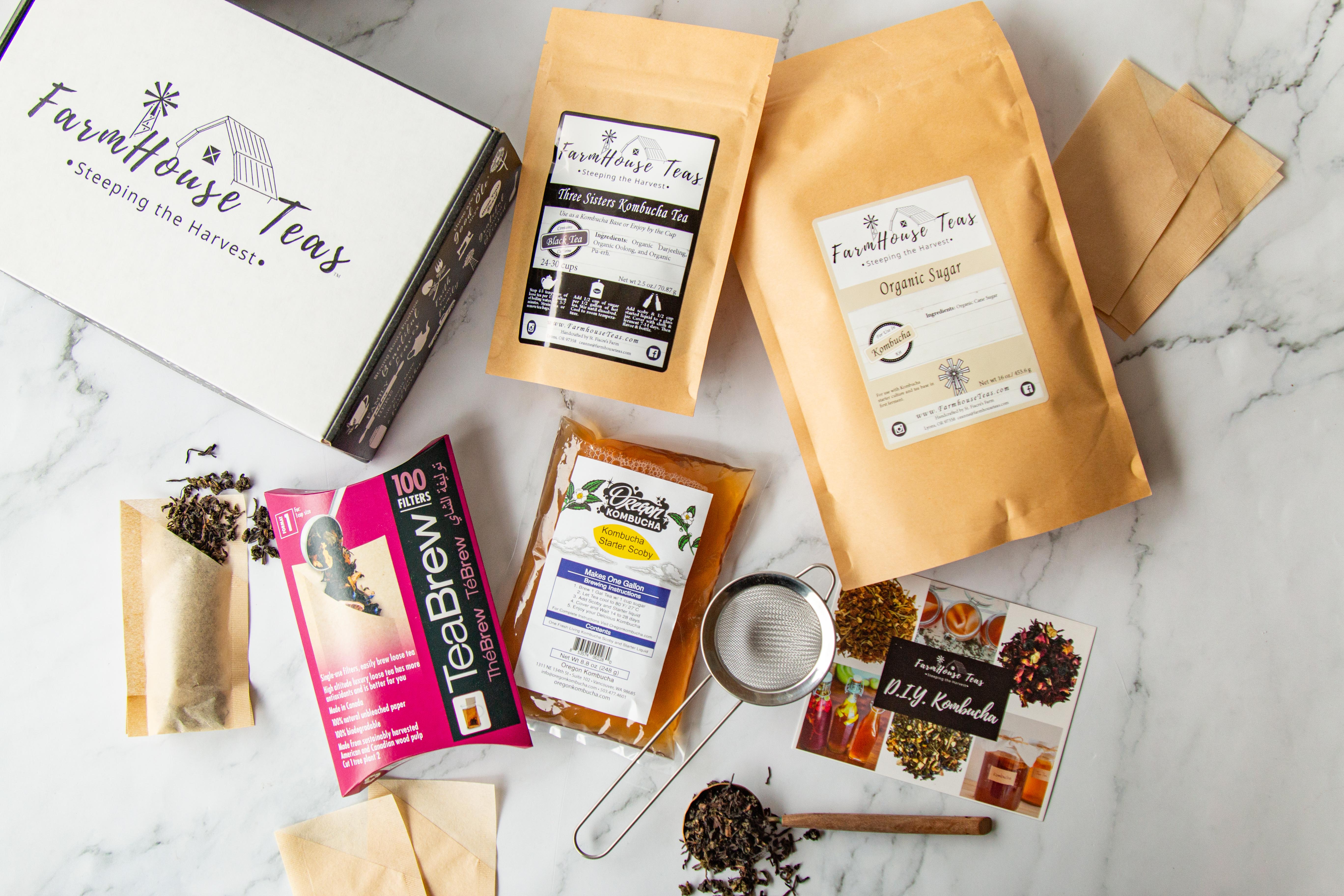
Say Goodbye to Moldy SCOBYs
Now that you know the signs of kombucha mold, it'll be easy for you to identify it if it ever forms on your SCOBY (Pillicle). If you do find mold, simply throw away the SCOBY and start again with a new one. And be sure to clean your brewing equipment thoroughly with white vinegar before starting your next batch.
The key to preventing moldy kombucha is being vigilant during the brewing process and using high-quality ingredients. If you are new to kombucha and just getting started (or maybe restarting) make sure to check out the Homestead Kombucha Bundle gives you everything you need to get started with your very own DIY kombucha brew. If you would like to take a deeper dive make sure to check out our free 3 video kombucha workshop online to get you headed in the right direction.
Happy 'boocha mak'n!









